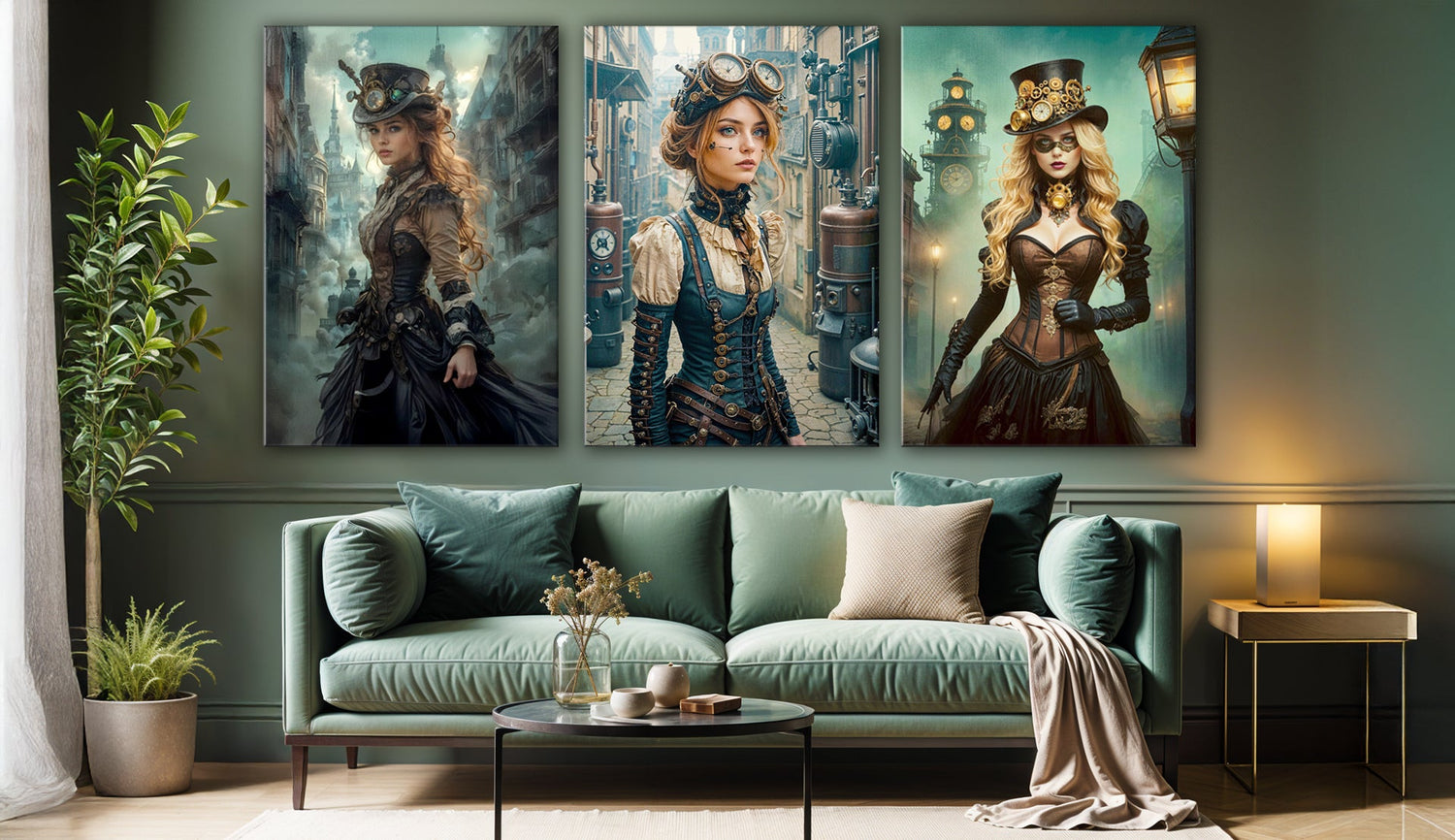
Reimagining the Geisha: From Tradition to Tattoo
Where History Meets Ink and Intention
Geisha. The word alone evokes centuries of discipline, ritual, and quiet mastery. It's often romanticized and sometimes misunderstood; the geisha is always visually iconic. In today's world of remix culture and fluid identity, one might ask, "How does such a storied symbol evolve?"
This collection of 12 canvas wall art pieces shows a new take on the geisha archetype. Some hold swords. Others wear full-back tattoos. A few gaze directly at us. Many do not.
Instead of sticking to the past, this collection makes us think about tradition as something that's alive and part of body art, modern styles, and the ways people are divided into groups.
From the Floating World to the Digital Frame
Geishas traditionally belonged to the hanamachi, or "flower towns," where they mastered music, movement, and conversation to provide sophisticated hospitality. Their visual style—elaborate kimonos, white-painted faces, and intricate hair ornaments—was as much a performance as the dance itself.
In this canvas art wall decor collection, elements of that visual language persist: the parasol, the obi, and the downward gaze. But the meaning shifts.
Take Scarlet Blossom Warrior, for example, where soft snowfall frames a kneeling figure holding a katana. Here, the geisha is not an entertainer but a guardian, grounded in discipline yet surrounded by the softness of the season.
In Cherry Blossom Muse, a flower tattoo covers the figure's spine. It combines traditional cherry blossom designs with modern tattoo art. This suggests that the body has evolved into a way for people to express themselves.
Is this reinvention sacrilegious or a celebration of agency? One could argue either way. Perhaps that’s exactly the point.
Visual Code-Switching and Cultural Fluidity
It may be tempting to see this geisha wall art series as purely beautiful, but each piece subtly challenges the viewer. For example:
- In Intense Bloom Warrior, crimson face paint bleeds like war paint beneath a fierce, determined gaze—flipping the concept of feminine mystique into something far more combative.
- Meanwhile, Crimson Umbrella Geisha offers no weapon, no gesture. Her calm, assessing gaze suggests that she is in control of her own destiny, not just a puppet for someone else's performance.
There’s a subtle but meaningful shift happening here. Where the traditional geisha was trained to embody beauty, these modern iterations seem to possess it—and sometimes even wield it.
This shows how culture and generations have changed. Today's collectors are not simply seeking Japanese geisha art for aesthetic harmony—they want symbols that challenge, merge, and reframe identity.

Fine Craftsmanship Meets Conceptual Depth
These wall art prints are built to last, offering more than just beauty. Each one is printed on 300–350 gsm cotton-poly blend canvas. The prints are stretched by hand onto FSC-certified wood frames with 2-cm or 4-cm profiles to fit your wall's dimensions.
With 26 different size options, from subtle bathroom decor wall art to bold canvas wall art for living room installations, each print arrives ready to hang—equipped with a country-specific kit for seamless mounting.
Whether you select one evocative piece or mix styles to create a samurai wall art triptych, the series offers flexibility without aesthetic dilution.

Own a Modern Take on Tradition
Reinvention isn’t the opposite of respect. It might, in fact, be one of the deepest forms of it.
The Geisha-Samurai Canvas Collection doesn’t just reflect the past—it wrestles with it, reinterprets it, and, in some cases, transforms it into something both familiar and entirely new.
Bring one (or more) of these evolving icons into your space—and make your wall a place where tradition doesn’t just survive but speaks in new dialects.







